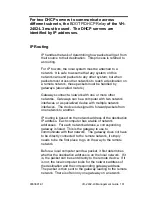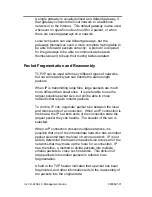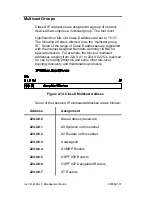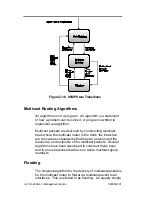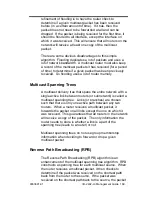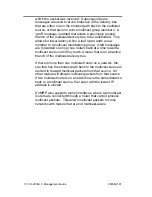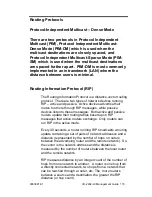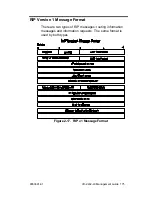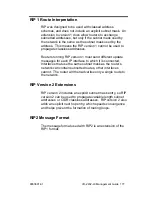
9033691-01
VH-2402-L3 Management Guide 163
Gateways that connect networks of different packet size
limits split the large packets into smaller ones and forward
the smaller packets on their attached networks.
ARP
The Address Resolution Protocol (ARP) determines the
MAC address and IP address correspondence for a network
device.
A local computer will maintain an ARP cache which is a table
of MAC addresses and the corresponding IP addresses.
Before a connection with another computer is made, the
local computer first checks its ARP cache to determine
whether the remote computer has an entry. If it does, the
local computer reads the remote computer’s MAC address
and writes it into the destination field of the packets to be
sent.
If the remote computer does not have an ARP cache entry,
the local computer must send an ARP request and wait for a
reply.
When the local computer receives the ARP reply packet, the
local ARP reads the IP MAC address pair, and then checks
the ARP cache for this entry. If there is an entry, it is
updated with the new information. If there is no entry, a new
entry is made.
There are two possible cases when an ARP packet is
received by a local computer. First, the local computer is the
target of the request. If it is, the local ARP replies by
sending its MAC IP address pair back to the requesting
system. Second, if the local computer is not the target of the
request, the packet is dropped.
Multicasting
Multicasting is a group of protocols and tools that enable a
single source point to send packets to groups of multiple
destination points with persistent connections that last for
some amount of time. The main advantage to multicasting is
a decrease in the network load compared to broadcasting.













